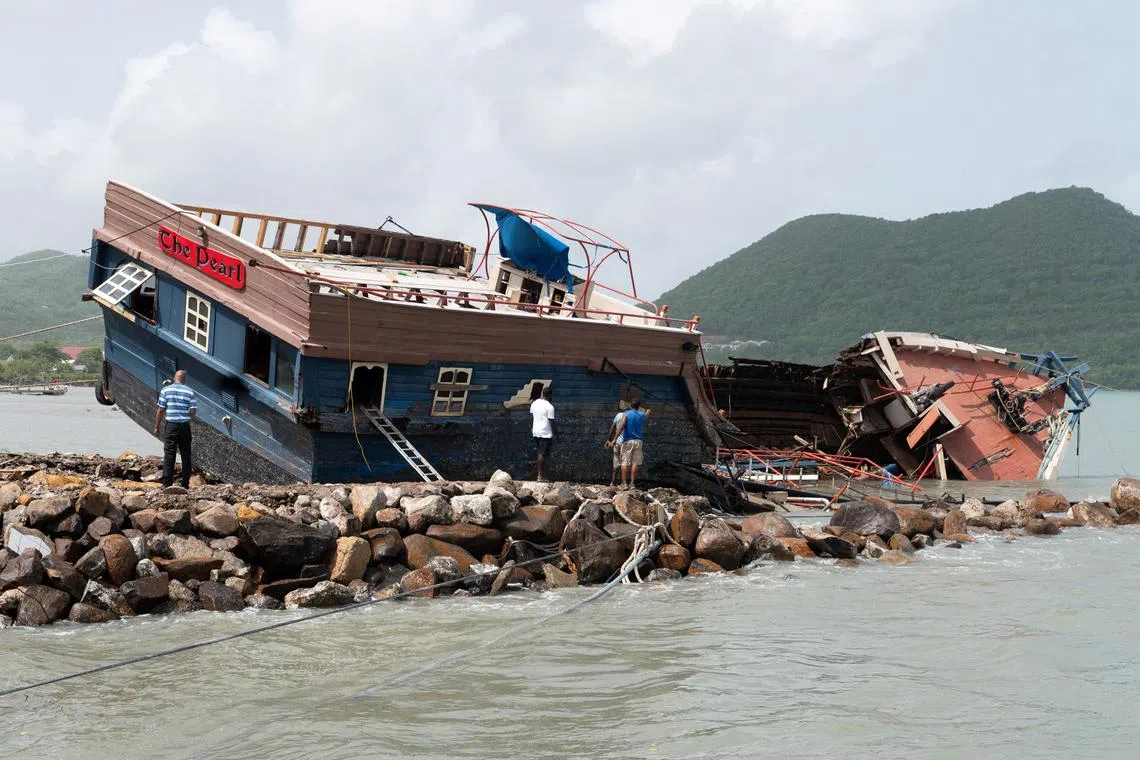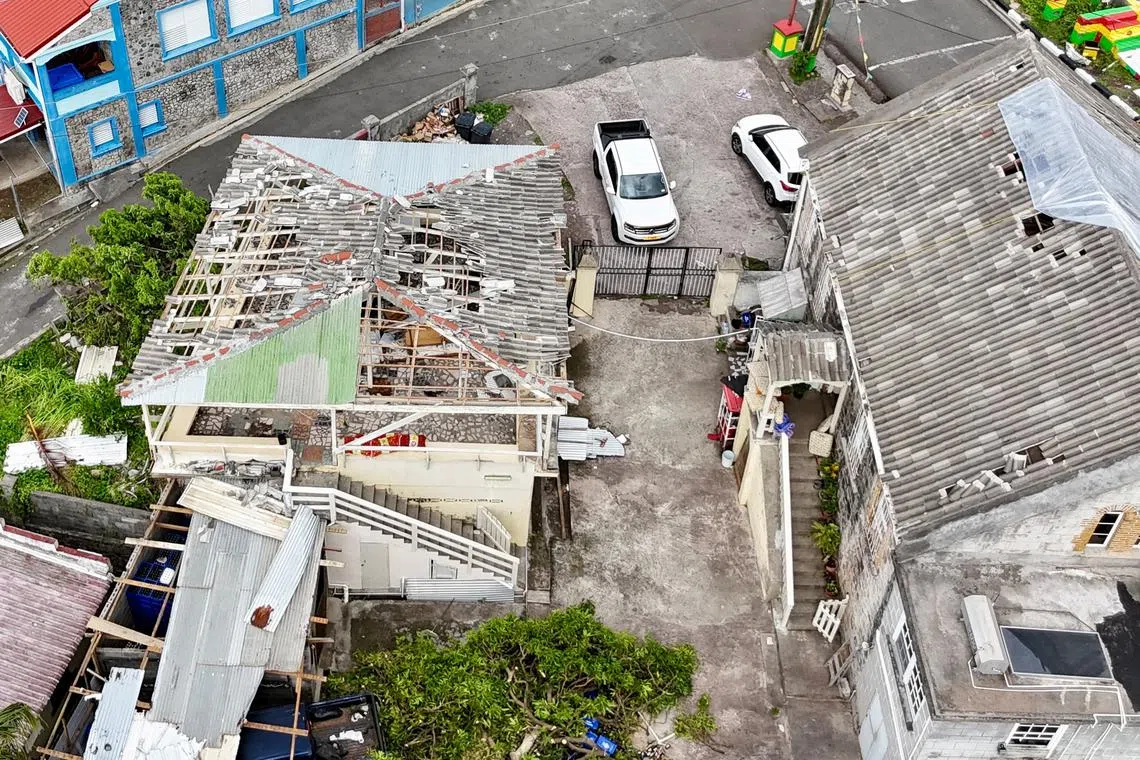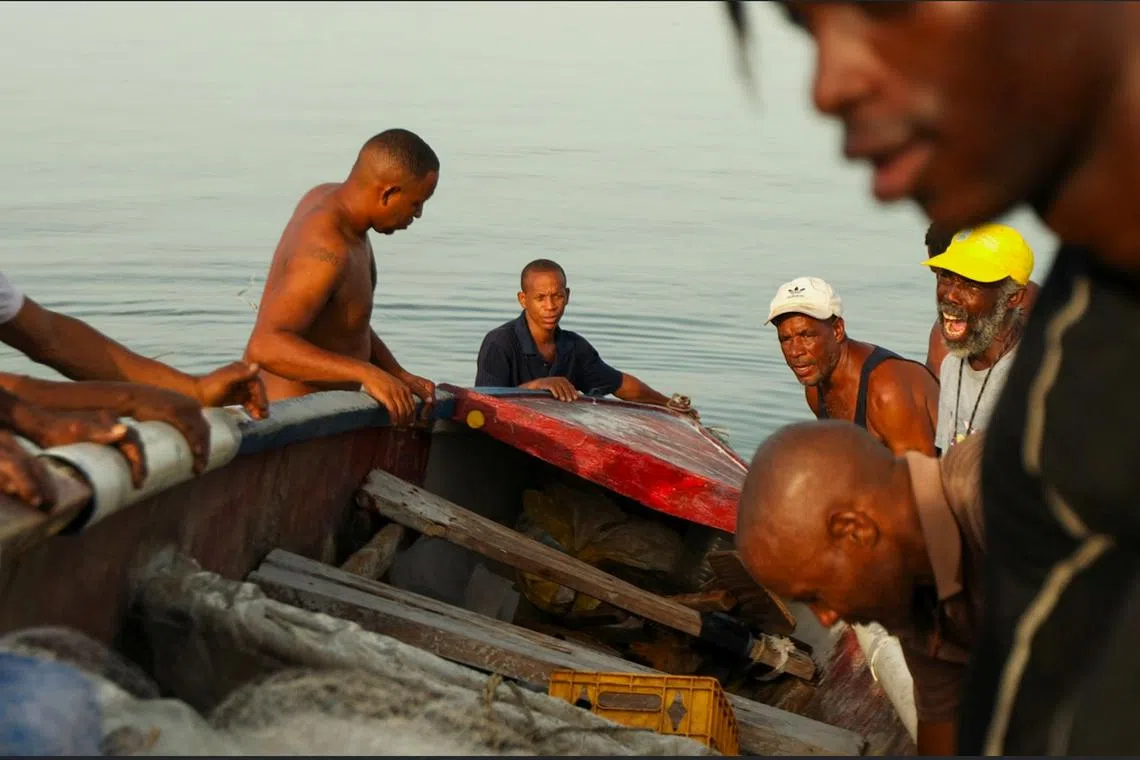Hurricane Beryl, churning towards Jamaica, threatens Haiti and Dominican Republic
Sign up now: Get ST's newsletters delivered to your inbox
Follow topic:
KINGSTON / PORT-AU-PRINCE - Hurricane Beryl barrelled towards Jamaica as a powerful Category 4 storm on July 3, after flattening homes and devastating agriculture on smaller islands in the eastern Caribbean, killing at least three people.
At around 0600 GMT (2pm Singapore time), the hurricane was about 300km east-south-east of the Jamaican capital of Kingston, according to the US National Hurricane Center (NHC), packing maximum sustained winds of 230kmh.
“Beryl is expected to bring life-threatening winds and storm surge to Jamaica on Wednesday and the Cayman Islands on Wednesday night and Thursday,” the NHC said. A hurricane warning is in effect for both places.
Hurricane conditions are expected to reach the coast of Jamaica at about midday local time, with tropical storm-strength winds from late morning, making outside preparations difficult or dangerous, it said.
In the capital Kingston, cars queued at petrol stations as people filled additional containers with fuel. Residents stocked up on water and other essential supplies and boarded up shops and houses.
“Yeah, right now, (we’re) worrying about the storm. You know it’s Category 5 and in Jamaica people are worried and always shopping and buying things as in this store,” Mr Andre, a salesperson in a local store said, without giving his full name.
The unusually early hurricane, whose rapid strengthening scientists said was likely fuelled by human-caused climate change, is expected to still be a hurricane when it passes near Jamaica and the Cayman Islands later this week.
Beryl, the 2024 Atlantic season’s first hurricane
Immense destruction
The storm hit St Vincent and the Grenadines especially hard, according to Prime Minister Ralph Gonsalves.
“The hurricane has come and gone, and it has left in its wake immense destruction,” he said. On one island in the Grenadines archipelago, Union Island, 90 per cent of homes had been “severely damaged or destroyed”, he added.
The Prime Minister confirmed one death, and said more fatalities could be confirmed in the coming days.
In a video briefing on July 2, Grenada’s Prime Minister Dickon Mitchell stressed that Carriacou and Petite Martinique, two of the three islands that make up the country, bore the brunt of the natural disaster, calling the situation “Armageddon-like”.
“There is no power. There is almost complete destruction of homes and buildings,” he said, citing impassable roads due to downed power lines and destroyed fuel stations crimping supplies.
Mr Mitchell said at least two deaths were attributed to the impact of Beryl so far.

The “pirate” party boat The Pearl stuck on rocks after Hurricane Beryl passed in Gros Islet, St Lucia, on July 2, 2024.
PHOTO: REUTERS
The Miami-based US hurricane centre estimates that the massive weather system is moving towards the west-north-west at a speed of 35kmh.
In Fort-de-France on the French Caribbean island of Martinique, north of St Vincent, video shared on social media showed flooded streets and locals attempting to clear away debris.

Buildings with damaged roofs after Hurricane Beryl passed the day before, in the northern Saint Patrick parish town of Sauteurs, Grenada, on July 2, 2024.
PHOTO: REUTERS
In addition to Haiti’s southern coast, the NHC also declared a hurricane watch for Mexico’s Yucatan peninsula, dotted with beach resorts popular with tourists.
Ahead of the storm’s approach expected on the night of July 4, Mexico’s Defence Ministry said the army, air force, and national guard had activated emergency response protocols in the three Yucatan states, with 120 shelters opened and nearly 4,900 troops on guard on the peninsula.
In the resort town of Cancun, supplies of wooden boards used to protect shopfronts were dwindling as residents prepared for Beryl’s arrival.
The unusually early timing and rapid intensification of the storm is partly due to warmer ocean temperatures, scientists said.

Local Jamaican fishermen helping each other prepare by bringing boats inland as Hurricane Beryl approached, in Kingston, Jamaica, on July 2, 2024.
PHOTO: REUTERS
Climate change likely contributed to Beryl’s early formation, while also driving how quickly it intensified, according to scientists surveyed by Reuters, which could provide an unsettling preview of future storms.
Global warming has helped push temperatures in the North Atlantic to record highs, said Mr Christopher Rozoff, an atmospheric scientist at the US-based National Centre for Atmospheric Research. The warmer waters lead to more evaporation, which fuels more intense hurricanes featuring higher wind speeds, he said.
Beryl jumped from a Category 1 to a Category 4 storm in under 10 hours, according to Dr Andra Garner, a Rowan University meteorologist. That marked the fastest intensification ever recorded before September, the peak of the Atlantic hurricane season, she said. REUTERS

